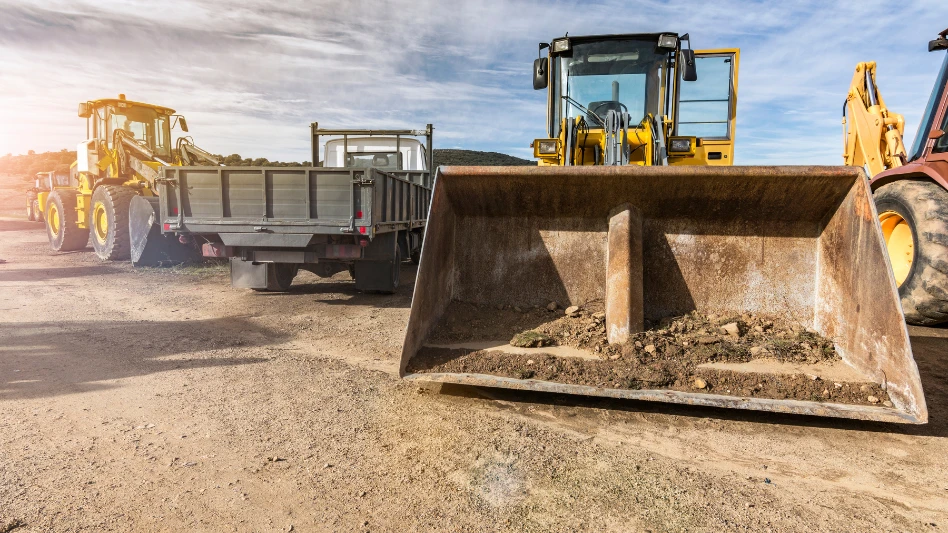
As we get into the heart of summer 2009, it’s hard to forget the skyrocketing prices of last year, despite assurances that we won’t see a repeat performance this season. At press time, the Energy Information Administration (EIA) projected regular gasoline prices would average $2.67 per gallon.
Still, many we spoke with remained skeptical. In fact, fuel prices have remained No. 1 in our survey listing contractors biggest business-limiting concerns for five years. Some were already seeing prices steadily rising in their area. While nobody wants to see pump prices like last summer’s, many landscape companies admit they are at least better prepared and already taking steps to keep their budget in check.
There are several factors that affect the price at the pump, some weighing more heavily than others. “Historically, the No. 1 factor explaining gasoline prices has been the cost of crude oil,” says Ron Planting, statistics manager for the American Petroleum Institute (API). “Last year we had record high crude oil prices, leading to record high gas prices. But they’ve come down dramatically since then.”
After reaching such astronomical numbers last year, many factors have helped keep costs down in 2009. For one, people are being more careful about how they consume fuel, Planting says. “The airlines, for instance, have worked really hard to become more fuel efficient.”
The recession has also had a large impact on the cost of fuel by affecting supply and demand. Americans aren’t driving as much. While summer used to be the peak time for vacationing, the failing economy has forced many to plan for summer “staycations” – vacations spent at home. But there are other sectors of the economic state that are having an even bigger impact, says Planting. “Manufacturing and trade are way down from last year and that affects diesel demand,” he explains. “In addition, there’s been reduced air travel as well, and that means less pressure on crude oil prices.”
Hesitant optimism
Even as the experts predict prices will max out at around $2.70 per gallon at the pump this summer (the EIA prediction at press time), many landscape companies have a hard time forgetting when the numbers just kept going up last season, even after it seemed they couldn’t possibly go any higher. In fact, we didn’t talk to any contractors who weren’t at least a little doubtful. “We are always skeptical,” admits Kory Ballard, president, Perficut Lawn & Landscape, based in Des Moines, Iowa. “Last year was a tough year for several reasons in our area including record rainfall, high fuel prices and an uncertain economy.”
In 2008, Ballard’s company used 180,000 gallons of fuel. For the $13 million full-service landscape company, the purchase of fuel came out to 5 percent of the company’s gross revenue. This year, in order to be more prepared, the company is pre-purchasing fuel. “We have two locations with on-site tanks that are filled by a fuel provider,” explains Ballard. “We started talking with our supplier and pre-bought 80 percent of our anticipated fuel for 2009. While fuel was at a two-year low and we were paying more than the pump price, we are guaranteed not to pay more than our pre-determined price. This is a comfort for us and has allowed us to properly budget our fuel costs for 2009. We expect to save over 40 percent for the year.”
 ODonnell PhotografKay Borders, vice president of Georgia-based Borders ’n Blooms Landscaping, a small full-service lawn and landscape company, says she too is only cautiously optimistic about fuel costs remaining low. “I think everyone is still skeptical,” she says. “You can’t always believe what you hear on the news until it comes to fruition. Last year the numbers just kept going up.”
ODonnell PhotografKay Borders, vice president of Georgia-based Borders ’n Blooms Landscaping, a small full-service lawn and landscape company, says she too is only cautiously optimistic about fuel costs remaining low. “I think everyone is still skeptical,” she says. “You can’t always believe what you hear on the news until it comes to fruition. Last year the numbers just kept going up.”
Rapidly rising prices have had a significant impact on the company’s budget, adds Borders. In the last four years the amount the company has spent on fuel has nearly doubled. It jumped from $13,000 in 2004 to $25,000 in 2008. Borders says this means finding the delicate balance between earning a living and retaining a customer base. “We’ve had some of our customers for so long that you don’t want to run them off,” she says. “They’re going through the same thing and paying high gas prices. But you still have to make a profit.”
But some say the fact that their customers are going through the same thing makes them more understanding. Though it might be tough for them, too, they are aware that a fuel surcharge is necessary so that their landscape company isn’t losing money. For Gasper Landscape & Design, a Richboro, Pa.-based company that spent $90,000 in fuel costs last year (up approximately 50 percent from the year before), tacking on a fuel surcharge was necessary to balance out the extra cost of fuel in 2008. Owner Bob Gasper runs both a full-service retail garden center and a full-service landscape construction firm, which bring in a combined $7 to $7.5 million. “We do a lot of bulk deliveries and added our fuel surcharge there, and never had a problem,” he says.
Bill Atwood, owner of Bill’s Complete Lawncare, and four other Texas-based businesses including two landscape companies and two seasonal decorating companies, also uses a fuel surcharge, and says he remains unconvinced about prices remaining low. “I would be surprised if gasoline did not exceed $3 per gallon this summer,” he says.
Atwood, whose companies brought in a total revenue of $3 million last year, says fuel is the second largest expense for his business, next to labor. In 2008, he spent exactly 15.43 percent of his total lawn care revenue on gasoline. With gas making up such a large portion of his budget, he found last year’s high prices shocking. The highest price Atwood paid in his area last year was $3.85 a gallon, a price he says totally caught him off guard. “I did not plan for that large of an increase in my budget, nor did I plan for that large of an increase in our annual price for customers,” he says. “Fortunately we have a clause in our contract that allows us to increase our price for lawn care by $1 per lawn for every 25 cents increase in the price of gas above the cost of gas at the time the contract was written. That saved us from a huge disaster. We were actually able to recoup our gasoline expenses above our budgeted amount.”
More ways to save
Many companies that felt the pinch of high prices last year are tightening their driving routes and finding other ways to keep costs down this year. But many, like Gasper, say preventing wasted gas has always been a goal – even when prices weren’t astronomical. “We have 15 large trucks and spend a lot on fuel, even in normal conditions,” he says. “So we already stick to the tightest routes possible. It’s just been a matter of continuing what we were already doing.”
Borders agrees well-thought-out routes can help prevent wasted fuel. “We’ve got our routes down to where we’re in the same area all day,” she says. “We stress the importance of getting all of the jobs in that area done in one day. You have to keep your routes structured and confined to specific areas or else you’ll be driving 50 miles back and forth constantly. I’ve found that a lot of other landscapers are doing this same thing.”
Atwood says another benefit of having his routes down to the shortest and fastest ways possible is that it allows him to know exactly how much gasoline will be used in a given week – and then budget accordingly. “The report the foreman turns in every day has mileage when the crew left and mileage when they got back to the shop,” he says. “It had better be very close to what it was the previous week or someone has some explaining to do!” Atwood also requires his crews to shut the engine off at all job stops and requests not running the air conditioner unnecessarily.
Ballard has his company’s routes well-managed, too. He worked closely with his entire management team in order to reduce any wasted driving. And he’s even taking it a step further and now considering smaller, more fuel-efficient vehicles for his sales staff.
On the bright side
While many aspects of the failing economy have been difficult to cope with, the fact that it’s keeping fuel prices low is at least one positive that landscape contractors can lean on for now. It may just be the bright side of things – assuming costs don’t rise too much this year. And if costs do rise, the positive is that most contractors do seem more prepared to handle it, especially after dealing with last year’s prices. Though skeptical that prices will remain low all season, Ballard is making an effort to stay positive for now. He notes: “Since fuel is one of our largest expenses, low fuel prices will help our bottom line tremendously. We also believe that our residential customers feel some relief at the pump, making them less likely to discontinue outsourcing their lawn services.”
The author is a freelance writer based in Royersford, Pa.

Explore the July 2009 Issue
Check out more from this issue and find your next story to read.
Latest from Lawn & Landscape
- Analysis of an entrepreneur
- Terra Nova's Sedum Conga Line variety wins Best of 2024 Perennial award
- Different ways to distribute
- Case's 580EV electric backhoe loader wins Good Design Award
- Davey Tree promotes Dan Herms to VP, GM of Davey Institute
- Caterpillar's Cheryl H. Johnson set for April retirement
- Registration open for sixth annual Lawn & Landscape Technology Conference
- 12 interview questions to help you hire winners





